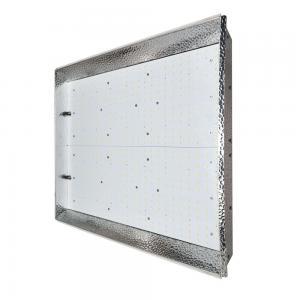The topic of a previous post was Photosynthetic Active Radiation (PAR) and Photosynthetic Photon Flux Density (PPFD). PAR is the band of wavelengths between 400 nm and 700 nm. PPFD is a measure of the photons hitting the plant. This post will focus on another important measure for deciding on a grow light, grow light efficiency.
PPFD is a measurement of light intensity within the PAR wavelengths and is measured in umol/m2s1. The efficiency of a grow light on the other hand is measured in umol/J. Sometimes written as micromole/j, umol/j, umolj-1 or PPF/W. Grow light efficiency is also referred to as photosynthetic photon efficiency/efficacy (PPE). Thus, umol/J is the amount of micromoles of photons produced per joule of energy used.
The power draw of a light is measured in watts and watts is the joules consumed per second (J/s). Therefore, if you know the wattage of a single light source and the Photosynthetic Photon Flux (PPF) value, then the efficiency of the light can be calculated. For example: 1 100 umol/s and 500 W is (1 100 umol/s) / (500 J/s) = 2.2 umol/J.
LED grow lights compared to HID grow lights
High intensity discharge (HID), includes high pressure sodium (HPS) and metal halide (MH) lighting. Other legacy lighting technology includes compact fluorescent lighting (CFL). HID lights work by igniting a gas with an arc created by a high voltage ballast. The mercury in an HPS light turns into a vapour and stays lit. HIDs require the ballast to control the initial spark, but also for the maintenance energy required to stay lit. However, LED grow lights do not require a ballast.
LED grow lights resist dust accumulation better than HPS or MH grow lights. Dust and debris can significantly drop light emission from a fixture over time.
HID lights require lamps to be replaced on a frequent basis. The frequency varies and it’s good to have a PAR meter in your in your growing facility.
More is more
Philips lighting launched a series of grow lights in 2017 with an efficiency of 3 umol/J, showing the world what is possible and what efficient lighting will be available in the near future.
A PPE of 1.5 umol/J is considered efficient. Anything above 2.0 umol/J is considered very efficient. For comparison, many (high pressure sodium) HPS fixtures on the market have an efficiency of 1.3 umol/J or less, with some of the best HPS grow lights approaching 1.7 umol/J. The best ceramic metal halide (CMH) grow lights have an efficiency of just under 2.0 umol/J. HPS and CMH efficiencies will increase in the near future, but LED efficiencies will increase at a more rapid rate.
Grow light efficiency importance
Efficiency is why wattage does not matter for determining the light intensity of an LED grow light or any grow light. More efficient grow lights will emit more useful light while drawing fewer watts.
Efficiency may not be as important to some growers. Indoor farmers with a large operation should care about efficiency more than smaller growers since a difference of less than 1 umol/J will have a huge impact on their electricity consumption. The cost difference for an average home grower between a semi-efficient and very efficient LED grow light may not be a huge factor, but as most growers do care about their electricity consumption, every watt being pulled from the wall is important.
The higher the PPE value, the more effective the light fixture at converting electricity into photosynthetic photons and the less energy is consumed to achieve required PPFD values (light levels).
Sources in order of appearance:
- ChilLED Grow Lights
- KIS Organics Cannabis Cultivation and Science Podcast Episode 48
- LED Gardener
- Blue Tech Grow LED

